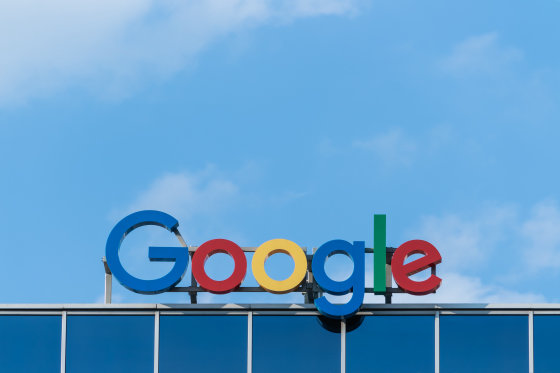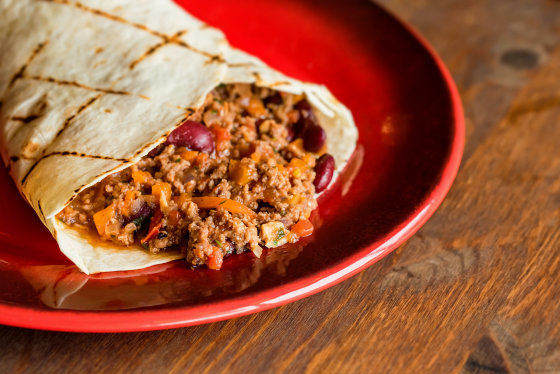What is Google's strategy to improve employees' eating habits through free employee cafeterias?

Google is famous as a company that provides high-quality food at free employee cafeterias, but in recent years it has been working on the difficult task of ``getting employees to eat vegetables''. Google's strategy, which uses experiments, data, and human cognition to improve the eating habits of its employees, has been published as potentially usable by other companies and organizations.
Inside Google's Efforts to Engineer Its Food for Healthiness | OneZero
Many people realize how difficult it is to maintain a healthy diet. This is true not only at the individual level but also at the national level, and the ``5 A DAY'' initiative, which encourages the US National Cancer Institute and the US Centers for Disease Control and Prevention to ``eat at least five types of fruits and vegetables a day, '' ' have failed, with only 9% of adults eating the recommended amount of vegetables as of 2017. As a result, one in three adults and one in five children in the United States are obese, increasing the risk of chronic diseases such as diabetes, heart disease, and cancer. Unhealthy eating habits have become a social problem, and the diet industry has grown to generate $66 billion (approximately 7.3 trillion yen) annually.
Meanwhile, Google has improved people's eating habits in recent years.

It is a well-known story that Google has a cafeteria that you can use for free. Originally, Google's free cafeteria was not intended for the health of its employees, but rather what founder Larry Page calls ``casual collisions,'' in other words, new ideas are generated by employees having casual conversations with each other. It was positioned as a place to be born.
Through this cafeteria, Google has conducted numerous experiments over the past few years to help employees eat healthier.
As a result, Google's New York office, for example, now serves 2,300 breakfast salads every day, compared to none two years ago, and seafood consumption has increased by 85% compared to 2017-2018. up. Soft drink consumption remained the same, but water consumption increased significantly.
Google's success lies in its strategy centered around data and human cognition. For example, a standard cafeteria plate is 12 inches (about 30 cm) in diameter, but the plate used by Google is smaller at 10 inches (about 25 cm). Vegetables are the first thing you see in the food lane, and it takes a lot of time to get to the meat or dessert, by which time you run out of space on your plate. The 'spa water' with strawberries, lemons, cucumbers, etc. floating on it is intentionally placed so that it is easier to take than soft drinks, and the size of

The person who initiated Google's 'canteen reform' was
Mr. Bakker points out that the problem is that young Americans have grown up without the custom of ``family meals,'' so even if they want to eat healthy, they don't know ``what constitutes a healthy diet.'' are listed. For this reason, Bakker believed it was important to 'help people make better choices.'
Bakker visited researchers trying to make healthy foods taste better, but ultimately concluded that efforts in this direction were hopeless. No matter how healthy whole grains are, if you put a hamburger next to them, your brain will choose the hamburger instead.
From here, an attempt to change the ``environment in which food is placed'' began. For example, it takes 40 seconds to make coffee at Google's office, but Google's break room, called a 'micro-kitchen,' is stocked with fruit, cookies, and other items, and during this 40 seconds, employees can make snacks. It is possible to pick it up. (PDF file)According to a study , people with high cognitive load are more likely to choose unhealthy snacks than healthy fruit when hungry.

With the above findings in mind, Bakker conducted an experiment to keep snacks away from the coffee maker. Previously, the distance between the coffee maker and the snack was about 2 meters, but when it was moved to about 5 meters, the probability of picking up a snack decreased by 23% for men and 17% for women.
In response to the survey results, Google rebuilt 1,450 microkitchens. Unhealthy snacks were mostly limited to
Bakker and his team applied a similar theory to soft drinks, making only the bottom half of the refrigerator door opaque so that all employees could see was water, flavored water, carrot sticks, and yogurt. Ingenuity. Of course, employees know there's a soft drink behind the opaque glass, but by making it invisible, they reduce the temptation. What is important in these initiatives is that employees have freedom of choice. 'We're not taking anything away. We're not saying, 'Eat your carrots.'' 'We believe deeply in freedom of choice,' Bakker said.
Ravi Dahl, a professor at Yale University and director of the Center for Customer Insights, is also involved in food research at Google. According to Mr. Dahl, in order to realize the goal of ``eating more vegetables'' considering the human decision-making process, it is necessary to make salads the first thing people see in the cafeteria. Because hungry people tend to grab the first thing they see. However, this alone is not enough; it seems that vegetables need to have ``persuasive power'' that will make people pick up vegetables.

When we held an Indian food fair at Google's employee cafeteria in the summer of 2019, many employees stopped by the salad bar. This Indian food fair was aimed at vegetarians, and the cafeteria was filled with ingredients such as cauliflower, tomatoes, and cheese, with only a small amount of lamb. However, dishes such as okra coconut curry were flavored with spices and had an appetizing finish, so many employees filled their plates with vegetarian food by the time they got to the lamb meat. Although this attempt can be called an ``unscientific'' experiment, it taught us a valuable lesson: ``Vegetables must taste good.'' In the end, in order to get people to take action and learn good behavior, logical reasoning has little to do with it, and what matters is whether the person enjoys it or not.
In response to the above lessons, Google has started an initiative to ``improve the taste of vegetable dishes.'' However, unlike meat, vegetables require a lot of labor to make them delicious, such as peeling, chopping, stewing, and pureeing. This challenge was extremely difficult, and in 2018 Mr. Bakker sought help from the culinary school ``The Culinary Institute of America'' (CIA). Google has created a vegetable-centered cooking curriculum with CIA chef Mark Erickson.
On the other hand, even if we simply say 'healthy food,' there is the problem that it is extremely difficult to scientifically substantiate the concept of 'healthy food.' Much of the scientific research that has been done to date has been small-scale and tied to specific health problems. Nutritional research also largely relies on test subjects' reports and lacks reliability. For decades, it has been argued that red meat is bad for health, but in 2019 an international research team concluded that ``reducing red meat intake significantly reduces cancer mortality rates.'' ' It 's small.' However, in response to this, Dr. Giota Mitrou, research director at the World Cancer Research Fund, said, ``It is not a good idea to spread the word that eating as much red and processed meat as you like will not increase your risk of cancer.'' , could put people at risk.''

The strength of Google's approach is that it is based on the premise that there is no one simple, one-size-fits-all solution to dietary problems. Google created a testing ground through meals served to more than 195,000 people several times a day, five days a week. They experimented, learned lessons, and created an American version of the Blue Zones within their company.
Because Google has not been working alone on dietary reform efforts, but has been working with companies, it is possible that other companies, academic institutions, hospitals, etc. can follow Google's lead. In fact, there are some organizations that have already adopted Google's strategy. Since the ``free employee cafeteria'' started by Google has spread widely in Silicon Valley, it is thought that there is a great possibility that Google's cafeteria reform will become a new model for companies.
Related Posts:
in Junk Food, , Posted by darkhorse_log







